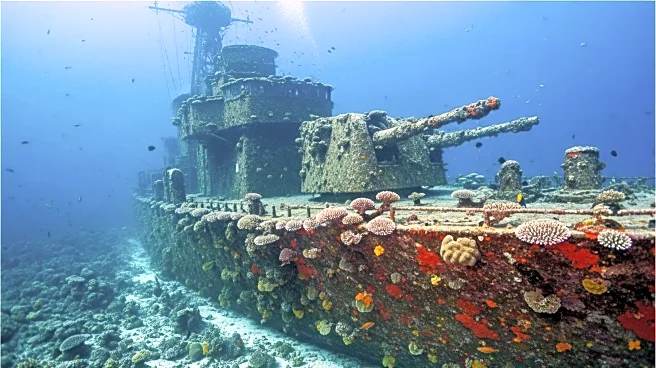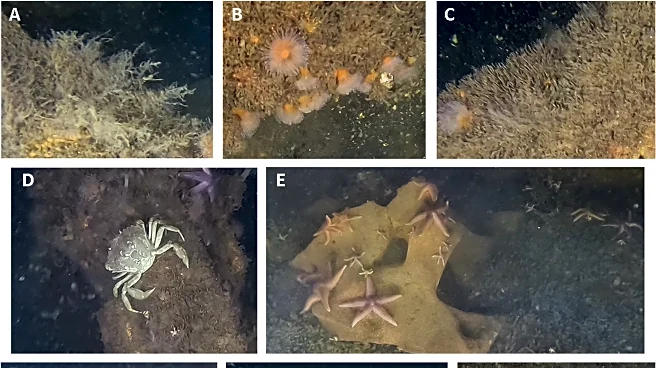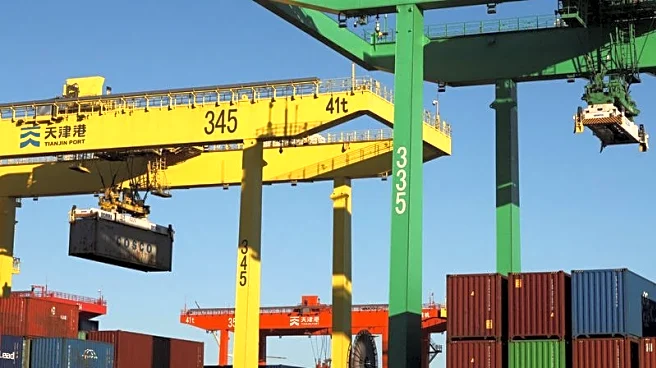What's Happening?
Researchers have found that sunken World War II munitions off the coast of Germany are serving as habitats for marine life, despite the presence of toxic chemicals. The study, published in Nature Communications Earth & Environment, reveals that sea creatures are more likely to inhabit these debris than the surrounding ocean floor. Led by Andrey Vedenin from the Senckenberg Society for Nature Research, the team used a remotely operated vehicle to survey the Bay of Lübeck, discovering a high density of epifauna on the warheads. These findings are surprising given the high concentrations of explosive compounds like TNT in the water, which approach toxicity thresholds for aquatic organisms. The study suggests that the hard surfaces provided by the munitions are more attractive to marine life than the softer sediments of the seafloor.
Why It's Important?
The discovery highlights a complex interaction between human-made debris and marine ecosystems. While the munitions provide a habitat for sea creatures, the toxic chemicals pose a significant risk to marine life. This situation underscores the need for careful management of underwater debris to protect marine biodiversity. The findings could influence environmental policies regarding the removal and replacement of toxic debris with non-toxic artificial surfaces. Such measures would aim to preserve marine habitats while mitigating the harmful effects of chemical exposure. The study also raises questions about the resilience of marine organisms and their ability to adapt to contaminated environments.
What's Next?
The researchers recommend the removal of the toxic warheads and their replacement with non-toxic artificial hard surfaces to ensure the continued survival of marine life in the Bay of Lübeck. This approach would help eliminate the negative impact of toxic chemicals on the ecosystem while providing necessary habitats for epifauna. The study may prompt further investigations into similar underwater sites globally, potentially leading to broader environmental remediation efforts. Stakeholders, including environmental agencies and marine conservation groups, are likely to engage in discussions about the best practices for managing underwater debris and protecting marine ecosystems.
Beyond the Headlines
The study opens up discussions on the ethical and environmental implications of leaving toxic debris in marine environments. It challenges the notion of resilience in marine organisms, questioning whether survival in toxic conditions is truly beneficial. The findings may lead to a reevaluation of how human activities during wartime continue to impact ecosystems decades later. Additionally, the research could inspire innovations in creating artificial habitats that mimic the beneficial aspects of debris without the associated risks.












